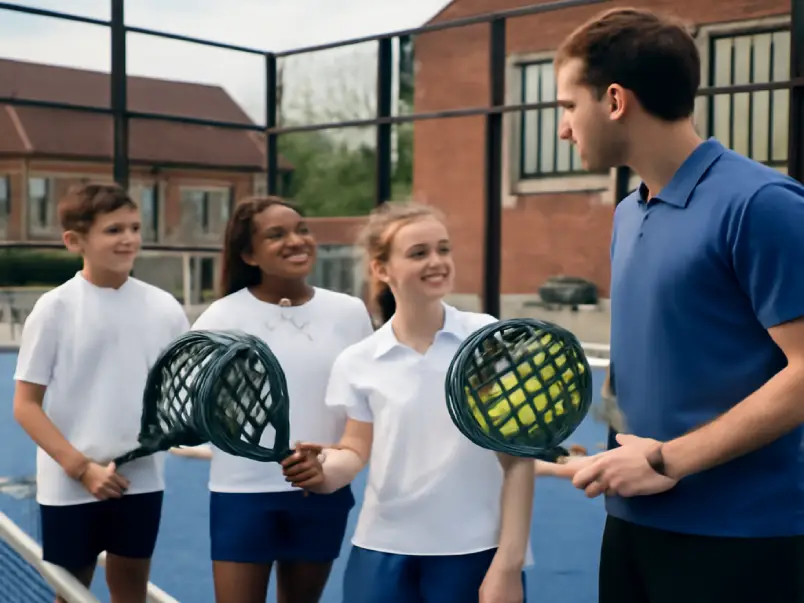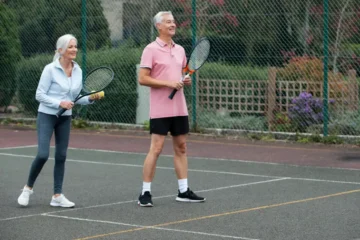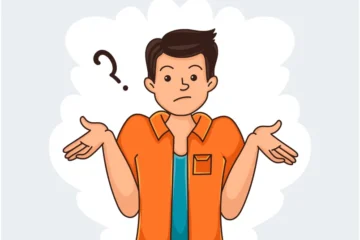In recent years, padel has witnessed an extraordinary global boom, earning its spot as one of the fastest-growing sports worldwide. What started in the sunny courts of Spain has now spread across continents, from Europe to South America, and even North America. The game’s simplicity, social nature, and accessibility have made it a hit with individuals of all ages and skill levels.
With sports such as tennis, basketball, and soccer dominating the curriculum of Physical Education (PE) classes, the question arises: Should schools incorporate padel into their sports offerings? As schools strive to modernize their PE programs and introduce diverse and engaging activities, could padel be the perfect fit?
This article explores both the benefits and challenges of introducing padel into school curriculums, weighing the pros and cons to help educators and administrators decide whether this rapidly growing sport deserves a place in their PE programs.
I. What is Padel? A Primer for the Uninitiated
Padel is often described as a blend of tennis and squash, played on a smaller court surrounded by walls. Although its roots trace back to Mexico in the late 1960s, the sport has exploded in popularity, particularly in Spain, where it has become a national pastime.
Key Features of Padel:
- Court Size: The padel court is smaller than a traditional tennis court, measuring just 20 meters by 10 meters.
- Walls: The sport incorporates solid glass or mesh walls that players use strategically during play, much like in squash.
- Underhand Serve: Players serve underhand, which is less intimidating for beginners.
- Doubles Format: Padel is almost exclusively played in doubles, making it a social and collaborative sport.
Key Differentiators from Tennis & Squash:
- Smaller Court: With less ground to cover, players are not required to have the same level of physical endurance as tennis players.
- Use of Walls: Just like squash, players use the walls to return the ball, creating dynamic rallies that can go on longer.
- Easier to Learn: Padel is generally easier to pick up than tennis. Its simpler rules and smaller court size make it accessible to beginners of all ages and abilities.
II. The “Pros”: Why Padel is a Perfect Fit for Schools
A. Unmatched Accessibility and Inclusivity
One of the most compelling reasons to introduce padel into schools is its accessibility. The sport has a low barrier to entry, meaning students of all athletic abilities can quickly start enjoying rallies. Whether you’re a beginner or an advanced player, padel can accommodate everyone.
- Inclusive for All Skill Levels: Due to the smaller court size and simpler mechanics, padel is less physically demanding in terms of speed and power than tennis, making it an excellent choice for students who may feel excluded by traditional sports.
- Encourages Participation: For students who may not excel at more traditional sports like basketball or soccer, padel offers a less intimidating alternative that encourages participation.
B. A Social and Collaborative Sport
Padel is predominantly played in doubles, which fosters teamwork, communication, and collaboration. The social aspect of the sport makes it an excellent addition to PE programs, as it promotes healthy interactions and relationship-building among students.
- Team-Oriented: Playing in pairs, students learn to work together, communicate effectively, and support each other, both on and off the court.
- Constant Interaction: The enclosed nature of the padel court encourages players to stay engaged with each other throughout the match, fostering a sense of camaraderie.
C. Develops Cognitive and Strategic Skills
Padel is often referred to as “physical chess” due to its emphasis on strategy over sheer physicality. The sport encourages students to think critically and make decisions on the fly, enhancing their cognitive and strategic thinking.
- Tactical Play: Padel emphasizes shot placement and tactics rather than relying solely on physical strength. Players must anticipate their opponents’ moves, judge the angles of the ball, and decide the best shot.
- Spatial Awareness: As players interact with the walls and the court’s space, they develop better spatial awareness, which can enhance their overall coordination.
D. Promotes Lifelong Fitness and Health
Padel provides excellent cardiovascular exercise while improving coordination and reflexes. It’s also a low-impact sport, making it easier on the joints compared to high-impact sports like tennis or basketball.
- Encourages Long-Term Engagement: Due to its social nature and lower physical demands, padel is more likely to be played throughout a person’s life. Students who develop a love for the game in school may continue playing it well into adulthood.
- Health Benefits: The cardiovascular benefits of the game, coupled with its positive effects on balance and coordination, make it an excellent choice for promoting lifelong fitness.
III. The “Cons”: Challenges and Considerations
A. The Significant Financial and Spatial Hurdle
While the benefits of padel are numerous, there are also significant challenges, particularly when it comes to the initial investment required to incorporate it into schools.
- Cost of Construction: Building a padel court can be costly. The price of construction for a standard padel court can range from $30,000 to $50,000 depending on location and materials.
- Space Requirements: While smaller than tennis courts, padel courts still require a substantial amount of space. Many schools may lack the necessary land or facilities to build a dedicated padel court.
- Equipment Costs: Schools will need to invest in padel-specific rackets and balls, which can further increase the initial cost.
B. Curriculum Integration and Teacher Training
Another challenge is the lack of qualified Physical Education (PE) teachers who are familiar with padel. This could make it difficult for schools to integrate the sport into the existing curriculum effectively.
- Lack of Expertise: Most PE teachers are trained in more traditional sports like basketball and soccer, and may not have the necessary skills or experience to teach padel.
- Need for Training Programs: To integrate padel effectively into PE curriculums, schools would need to invest in training programs for their teachers. This adds to the initial cost and may create logistical challenges.
C. Weather and Location Limitations
In some regions, weather conditions can limit the feasibility of introducing padel into schools.
- Outdoor Court Limitations: Padel courts are typically outdoor facilities, and their use can be significantly restricted in areas that experience a lot of rain or cold weather. While indoor courts are an alternative, they are even more expensive to construct.
- Climate Considerations: Schools in areas with long winters may find it difficult to make use of outdoor padel courts during the colder months.
D. Is It a Fad? The Question of Longevity
The sport’s recent explosion in popularity raises a valid concern: Is this a passing trend, or is padel here to stay?
- Sustainability: While padel is growing in popularity, its long-term viability is still uncertain. Schools would need to carefully consider whether this investment will continue to pay off in the years to come.
IV. Case Study / The Proof is in the Playing
In countries like Spain and Sweden, padel has already made its way into the education system. For example, several schools in Spain have integrated padel into their PE programs, with positive results.
- Spain: Padel is one of the most popular sports in the country, and schools have seen increased student engagement and participation rates in racket sports after introducing it into their PE classes. Students report enjoying the fun and social nature of the sport, with many continuing to play outside of school hours.
- Sweden: In Sweden, some schools have partnered with local padel clubs to offer students access to the sport, providing both training and court space. This collaboration has resulted in higher levels of participation and skill development.
V. Potential Solutions and a Path Forward
While there are challenges to introducing padel into schools, there are also potential solutions to overcome these obstacles.
A. Pilot Programs & Partnerships
Schools could start by offering padel through after-school clubs or by partnering with local padel clubs. This would allow schools to share facilities and coaching expertise without making a large initial investment.
B. Modular or Pop-Up Courts
Schools could look into modular or pop-up court solutions, which are cheaper and more flexible than traditional courts. These temporary courts could help schools gauge interest before committing to a permanent facility.
C. Community Use
Another option is to design courts for dual use by both the school and the local community. This could generate additional revenue and provide greater access to padel for local residents.
D. Phased Integration
Schools could start by introducing the basics of padel in sports halls or on smaller practice courts before building full-sized courts. This phased approach would reduce the financial and logistical burden while still allowing students to experience the sport.
Conclusion: Serving Up a New Opportunity
In conclusion, while introducing padel into schools presents logistical and financial challenges, the sport’s unique benefits make it a compelling addition to the modern PE curriculum. Padel encourages inclusivity, enhances cognitive and strategic thinking, and promotes lifelong physical activity, making it an excellent choice for schools looking to diversify their sports offerings.
By carefully considering pilot programs, partnerships, and phased integration, schools can introduce this exciting sport to students while keeping costs manageable. Far from being a fleeting trend, padel represents a modern approach to PE that can inspire a passion for sport in a broader range of students, making it a valuable expansion of any school’s athletic programs.
FAQs
1. What is padel, and how is it different from tennis?
Padel is a racket sport played on a smaller court, with walls that players use strategically, similar to squash. Unlike tennis, padel is mainly played in doubles and features an underhand serve, making it more accessible for beginners and less physically demanding.
2. Why should schools consider adding padel to their PE programs?
Padel promotes inclusivity, teamwork, strategic thinking, and lifelong physical fitness. It is a social sport that can engage students of all athletic abilities, making it a great addition to modern PE curriculums.
3. What are the main benefits of padel in schools?
Padel fosters collaboration, develops cognitive and strategic skills, and promotes lifelong health. Its low-impact nature also reduces the risk of injury, making it suitable for students of varying fitness levels.
4. What challenges do schools face when introducing padel?
The primary challenges include the high costs of building padel courts, the need for specialized equipment, and the potential lack of qualified PE teachers with padel expertise. Weather limitations and space requirements may also pose difficulties.
5. How can schools overcome the challenges of introducing padel?
Schools can consider pilot programs, partnerships with local padel clubs, and modular or pop-up courts to test interest and reduce costs. Phased integration, starting with basic padel training, can also help ease the transition.
6. Where has padel been successfully integrated into school programs?
Padel has been successfully incorporated into PE programs in countries like Spain and Sweden, where it has increased student engagement and participation in racket sports.




